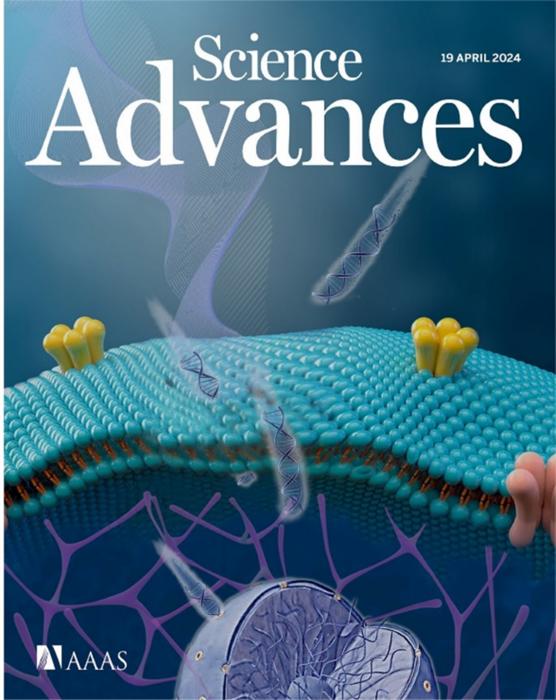Transfection is the process of deliberately introducing nucleic acids into cells. Cell transfection is crucial in the fields of T cell and stem cell therapy. However, the existing transfection technology still faces challenges in achieving high efficiency and maintaining optimal cell viability.

Credit: MENG Long
Transfection is the process of deliberately introducing nucleic acids into cells. Cell transfection is crucial in the fields of T cell and stem cell therapy. However, the existing transfection technology still faces challenges in achieving high efficiency and maintaining optimal cell viability.
Recently, research teams led by Profs. ZHENG Hairong and MENG Long from the Shenzhen Institute of Advanced Technology (SIAT) of Chinese Academy of Sciences, in collaboration with Prof. Tony Jun HUANG from Duke University, have proposed a novel method for microbubble-free transfection to enhance the permeability of cell and nuclear membranes using the acoustic and thermal effects on cells, achieving safe, efficient and high-throughput transfection of stem and primary T cells.
The study was published in Science Advances on Apr.17.
In this study, the researchers found that the proposed acoustothermal transfection device could significantly enhance the cell membrane permeability for efficient cargo delivery. Importantly, it can simultaneously deliver multiple types of plasmids into hard-to-transfect cells with high efficiency. Experiment results showed that dual types of plasmids could be delivered into mesenchymal stem cells (MSCs) with dual gene expression efficiencies of 89.6 (89.4% with flow cytometry). The flow cytometry and gene sequencing results showed that the cell viability of mesenchymal stem cells and primary T cells post-transfection remained at approximately 83.9% and 84.4%, demonstrating the safety of the process.
Furthermore, the In vivo experiments in mice showed that mesenchymal stem cells transfected with plasmids effectively accumulated in inflammation sites caused by cerebral ischemia and secreted brain-derived neurotrophic factor, resulting in a significant reduction of cerebral infarct volume. These indicated that acoustothermal transfection not only supports the functional expression of target genes but also preserves the cells’ inherent biological functions.
“Our method holds significant potential as a robust tool for future cellular and gene therapies,” said Prof. ZHENG.
Journal
Science Advances
Method of Research
Commentary/editorial
Subject of Research
Not applicable
Article Title
Acoustothermal transfection for cell therapy
Article Publication Date
17-Apr-2024



